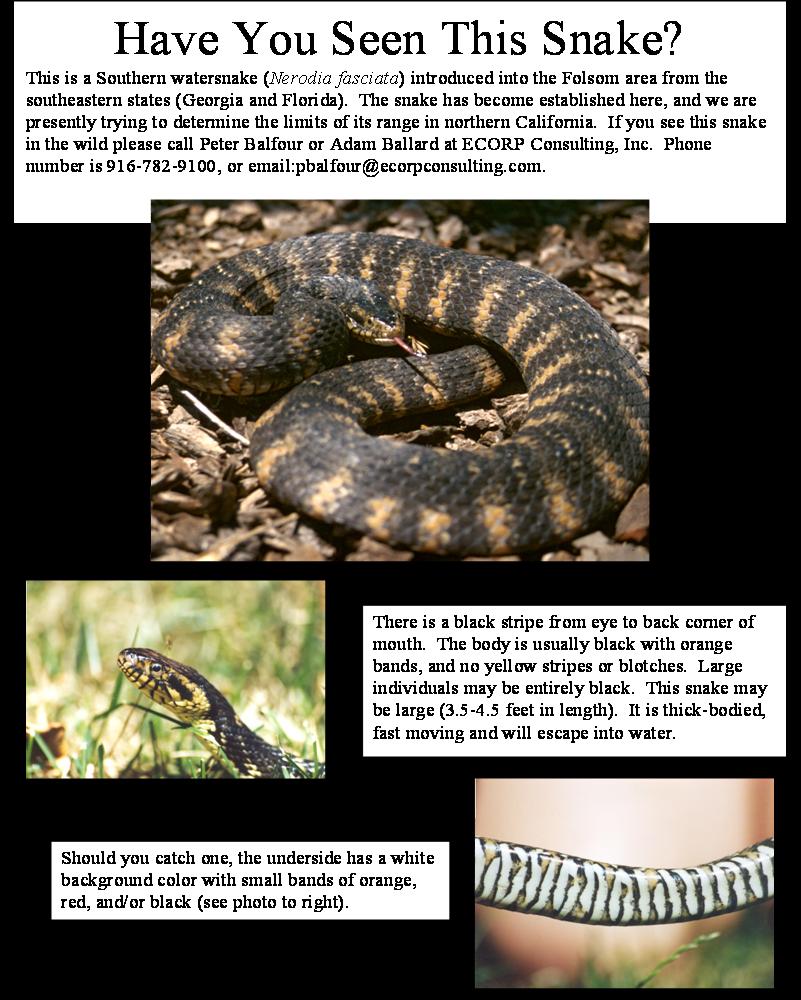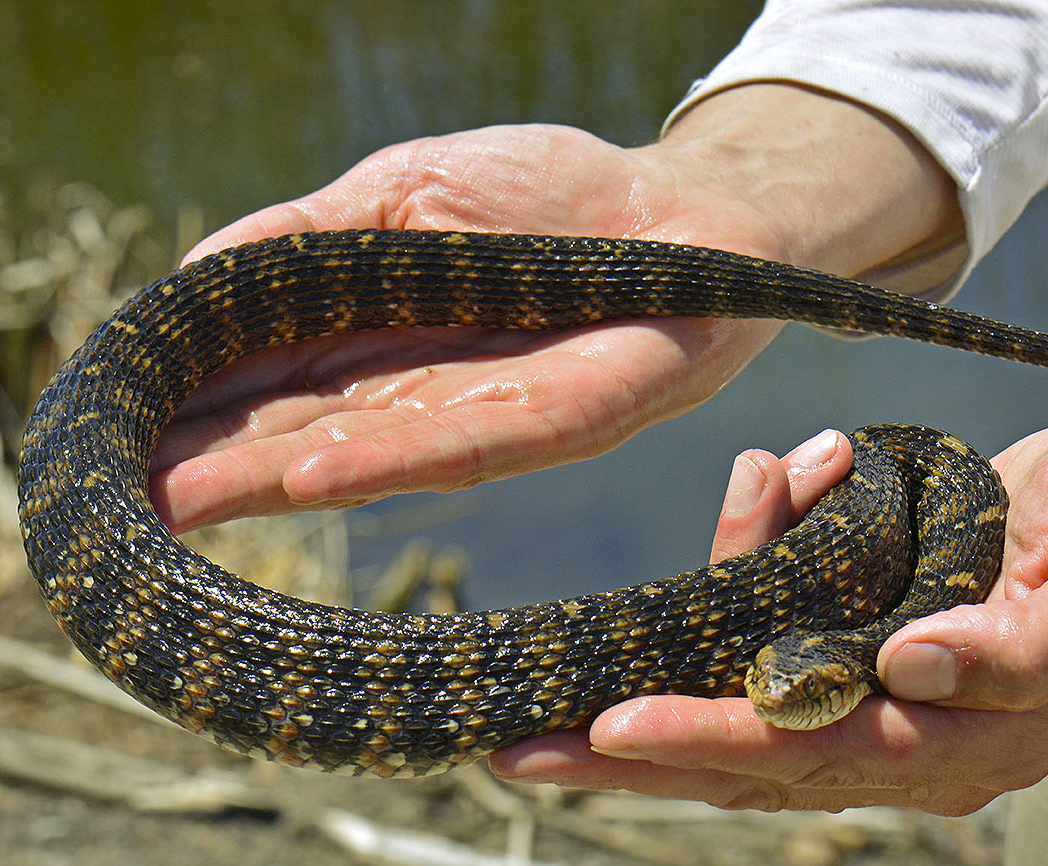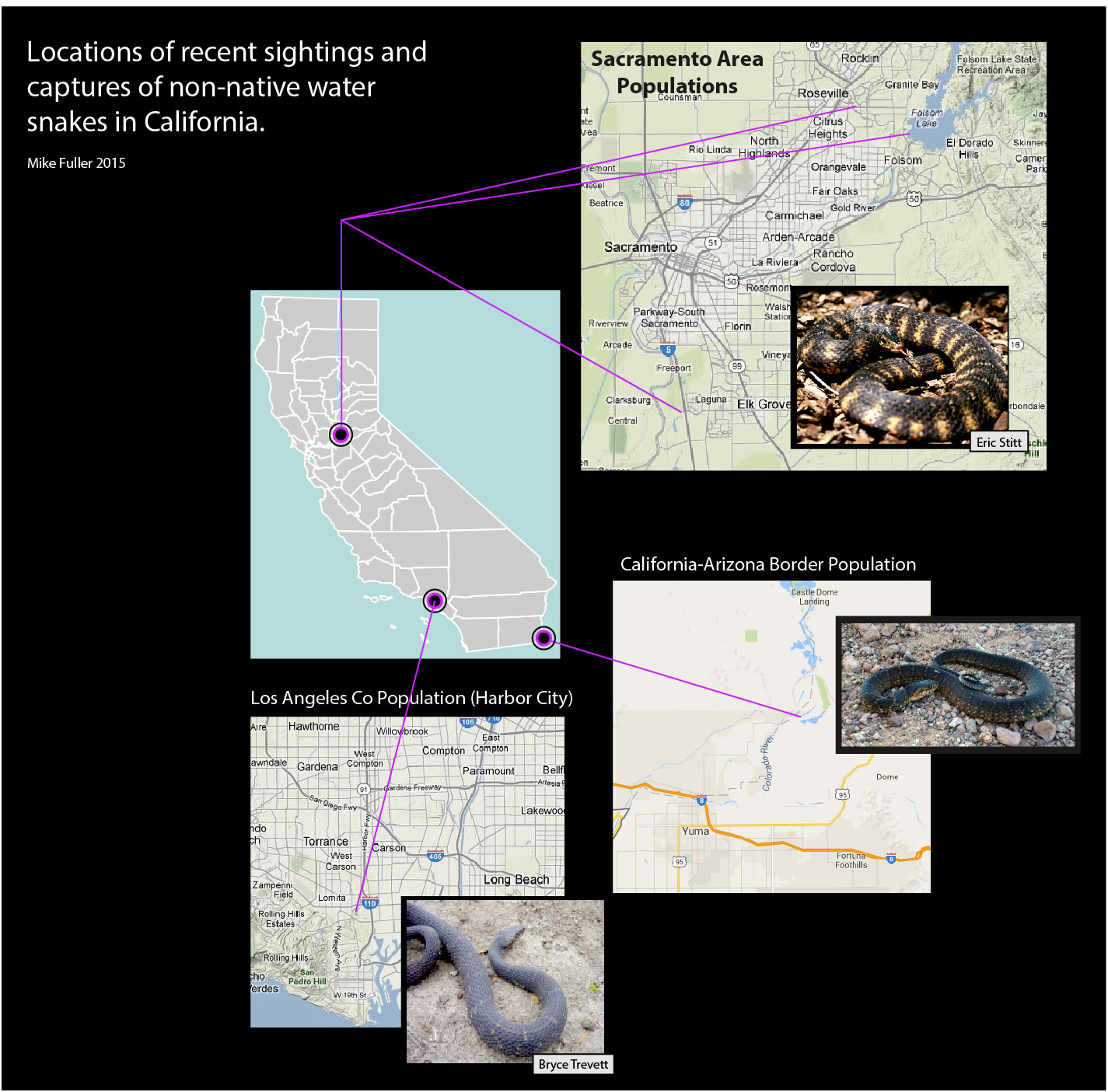|
Native gartersnakes are the most common aquatic snakes in California. They are often observed
swimming in creeks, ponds, and lakes, from the coast to high in the mountains.
Many but not all native gartersnakes
have a prominant, light-colored stripe that runs down their back. Most are dark colored; a few have rows of
dark spots. Gartersnakes tend to be slender and light in weight.
In the mountainous areas of California, such as the Sierra Nevada range, gartersnakes are the only aquatic species. While all snakes can swim, and will enter water to cool off or to escape people or predators, only gartersnakes will spend many hours in the water. If you observed a swimming snake in a mountainous area, nine times out of ten it will have been a native gartersnake. Probably the most common gartersnake observed in the mountains of Northern California, such as in the Yuba River area, is the Sierra gartersnake (Thamnophis couchii). The Sierra gartersnake (left photo below) is typically dark brown, and often does not have a clearly visible stripe down its back. The Western terrestrial gartersnake (right photo below) also lacks a stripe
You can see other photos of Sierra gartersnakes at the California Herps website. |
In California, Non-Native Watersnakes have never been observed outside of lowland areas.
There are no verified sightings of watersnakes in any natural mountain waters. Some believe that non-native watersnakes can only survive in altered, disturbed, or unnatural habitats, such as agricultural areas, reservoirs, and urban landscapes.
All verified sightings of non-native watersnakes in California have been from man-made or disturbed habitats. The freshwater creeks, ponds, reservoirs, and agiculture ditches where watersnakes have been observed in the state typically also support other non-native aquatic species, such as fishes from the Eastern US (e.g. bluegill, bass) and bullfrogs, which are also not native to California. Watersnakes do not have a stripe down their back. They are generally either a uniform dark color, or have wide blotches, bands, or saddles on their backs. Watersnakes tend to be heavy bodied (wide in the middle). You can see photos of non-native watersnakes here and here at the California Herps website.
|
||||||
Related Content:Watersnake information from California Department of Fish and WildlifeCalifornia Nerodia Watch at iNaturalistPublic information flyer for Northern California:
|
PREVIOUS NEWS
May 2016 Trapping for Water Snakes in Yuma, AZ
For general information on invasive water snakes in California, or to report on your observations, please contact: Mike Fuller. |
||||||






